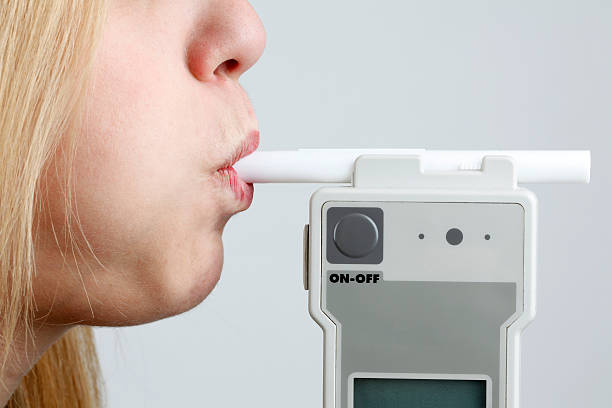Using a breathalyser, whether for personal use or in a professional setting, is a straightforward way to measure blood alcohol concentration (BAC). However, certain mistakes can lead to inaccurate readings, which could have serious consequences.
Whether you’re trying to determine if it’s safe to drive or you’re administering a breath test for another purpose, understanding the common pitfalls of using a breathalyser can help you avoid errors and ensure reliable results. Here are some of the most common mistakes people make when using a breathalyser and how to avoid them.
1. Not Waiting Long Enough After Drinking
One of the most common mistakes people make is not waiting long enough after consuming alcohol before using a Breathalyser. Immediately after drinking, the alcohol concentration in your mouth is much higher than in your blood, leading to an inflated BAC reading.
- Wait Time: To get an accurate reading, it’s recommended to wait at least 15-20 minutes after your last drink before using a breathalyser. This allows the alcohol to be absorbed into your bloodstream and reduces the impact of residual alcohol in your mouth.
2. Using the Breathalyser Incorrectly
Improper use of the breathalyser is another major cause of inaccurate readings. This can include not following the instructions for how to breathe into the device or using the device at an incorrect angle.
- Proper Technique: To use a breathalyser correctly, take a deep breath and blow steadily into the device’s mouthpiece for the recommended duration, usually 4-6 seconds. Ensure the device is held level and upright to prevent any liquid or debris from entering the sensor.
3. Ignoring the Device’s Calibration Needs
Breathalysers require regular calibration to maintain accuracy. Calibration adjusts the device’s sensors to account for any drift or degradation in accuracy over time. Ignoring this maintenance can lead to unreliable results.
- Calibration Schedule: Most breathalysers need to be calibrated every 6 to 12 months, depending on the manufacturer’s guidelines. Make sure to follow the calibration schedule provided in the user manual. If your breathalyser shows signs of inaccuracy or gives inconsistent results, it may need recalibration sooner.
4. Failing to Consider External Factors
External factors, such as temperature, humidity, and the presence of other chemicals, can affect the accuracy of a breathalyser. For example, using a breathalyser in extreme cold or heat may lead to incorrect readings.
- Ideal Conditions: Use the breathalyser in a stable environment, ideally at room temperature. Avoid using the device in extreme weather conditions, and be mindful of other chemicals in the vicinity, such as fumes from cleaning products, which can interfere with the readings.
5. Relying Solely on the Breathalyser
While breathalysers are useful tools for estimating BAC, they are not foolproof. Relying solely on a breathalyser reading to make important decisions, such as whether to drive, can be dangerous.
- Use with Caution: Even if your breathalyser reading is below the legal limit, it’s important to consider other factors such as your physical condition, the amount of alcohol consumed, and your tolerance. If in doubt, it’s always safer to avoid driving or engaging in activities that require full attention.
6. Not Cleaning the Device Regularly
A dirty breathalyser can give inaccurate readings. Residue from previous tests, saliva, or debris can interfere with the device’s sensor, leading to false results.
- Regular Maintenance: Clean your breathalyser regularly according to the manufacturer’s instructions. Replace the mouthpiece after each use to prevent contamination and ensure accurate readings. For more thorough cleaning, some breathalysers allow the sensor to be wiped or cleaned with alcohol swabs.
7. Using a Low-Quality or Expired Device
Not all breathalysers are created equal. Low-quality devices may not be as accurate or reliable as higher-end models. Additionally, using an expired or old device can lead to incorrect readings.
- Invest in Quality: Choose a breathalyser from a reputable manufacturer that meets industry standards. Check the expiration date or the recommended usage period for your device, and replace it as needed to maintain accuracy.
8. Misinterpreting the Results
Understanding how to read and interpret the results from a breathalyser is crucial. Some people may misinterpret a reading, either by misunderstanding the BAC levels or by not considering how their body metabolises alcohol.
- Know the Limits: Familiarise yourself with what the BAC levels mean and the legal limits in your area. Remember that even a low BAC can impair your judgement and reaction time. If you’re unsure about the results, it’s better to err on the side of caution.
Use a Breathalyser Correctly
Using a breathalyser correctly is essential for obtaining accurate BAC readings and making informed decisions. By avoiding common mistakes such as not waiting long enough after drinking, failing to calibrate the device, and relying solely on the breathalyser, you can ensure that the results you get are as reliable as possible.
Remember that a breathalyser is a tool to aid in decision-making, not a definitive measure of your ability to drive or perform other tasks. When in doubt, always prioritise safety and consider other factors before making decisions based on your BAC.


